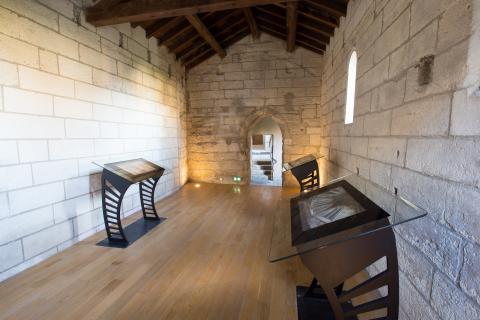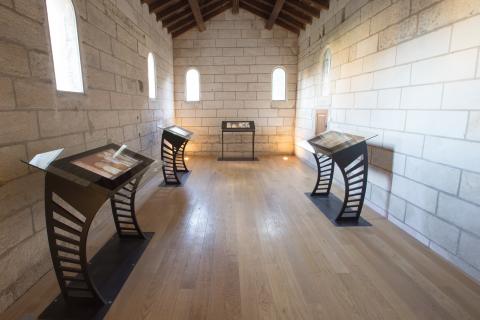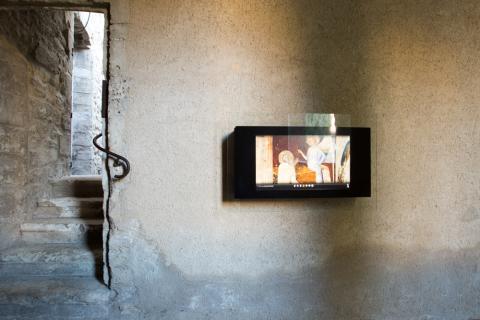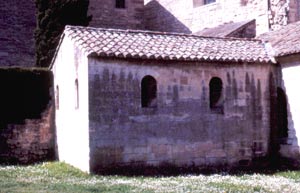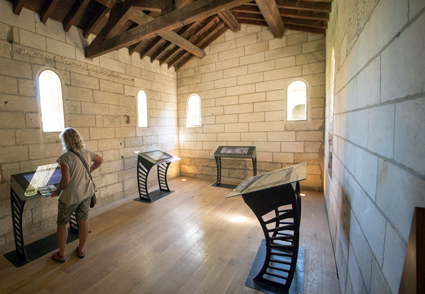The Chapel of the Dead was rebuilt during the second half of the 18th century. It leans up against the vice-sextons’ garden wall. The courtyard of the large cloister was partly used as a cemetery. When a father or a brother passed away, his body was brought to the chapel to be washed in accordance with the Customs, which were texts describing the way of life of the Carthusians, written by Guigues, the 5th Prior of the monastery. The body was dressed and draped with the rosary and placed on a board. The clothing and the cowl hood were then nailed to the board. After solemn Mass, the Carthusians proceeded to the cemetery to the sound of the tolling bell. The body, still on the board, was lowered into the excavation, the head oriented in the direction of the church if possible. The celebrant tossed a handful of earth, then the brothers and the servants filled the hole while the fathers chanted the psalms. A simple dark wooden cross was planted at the gravesite.
Now, the chapel of the dead is a space dedicated to digital technology and the presentation of the app for the Chapel of the Frescoes.


